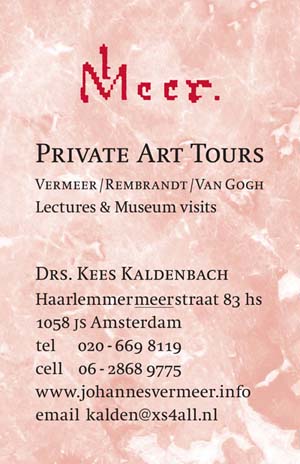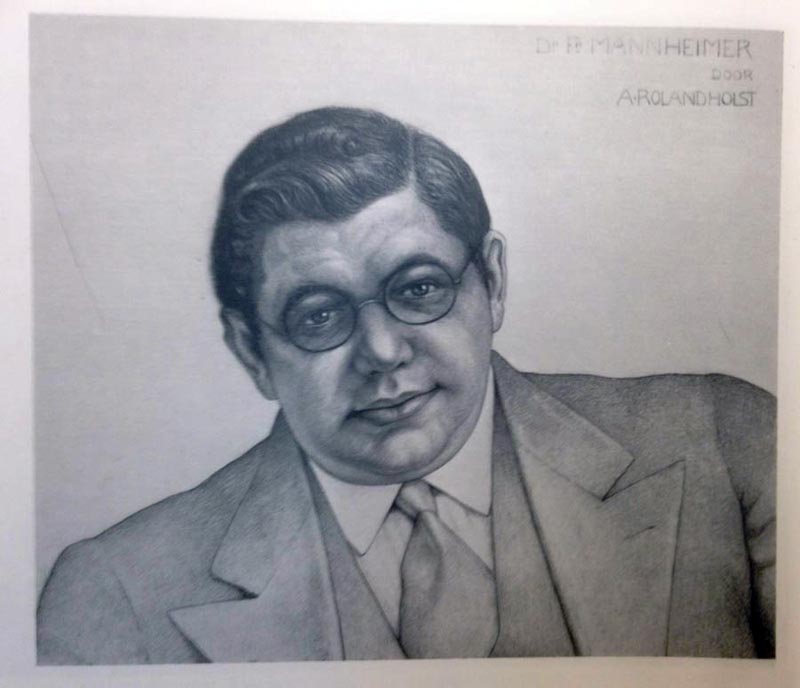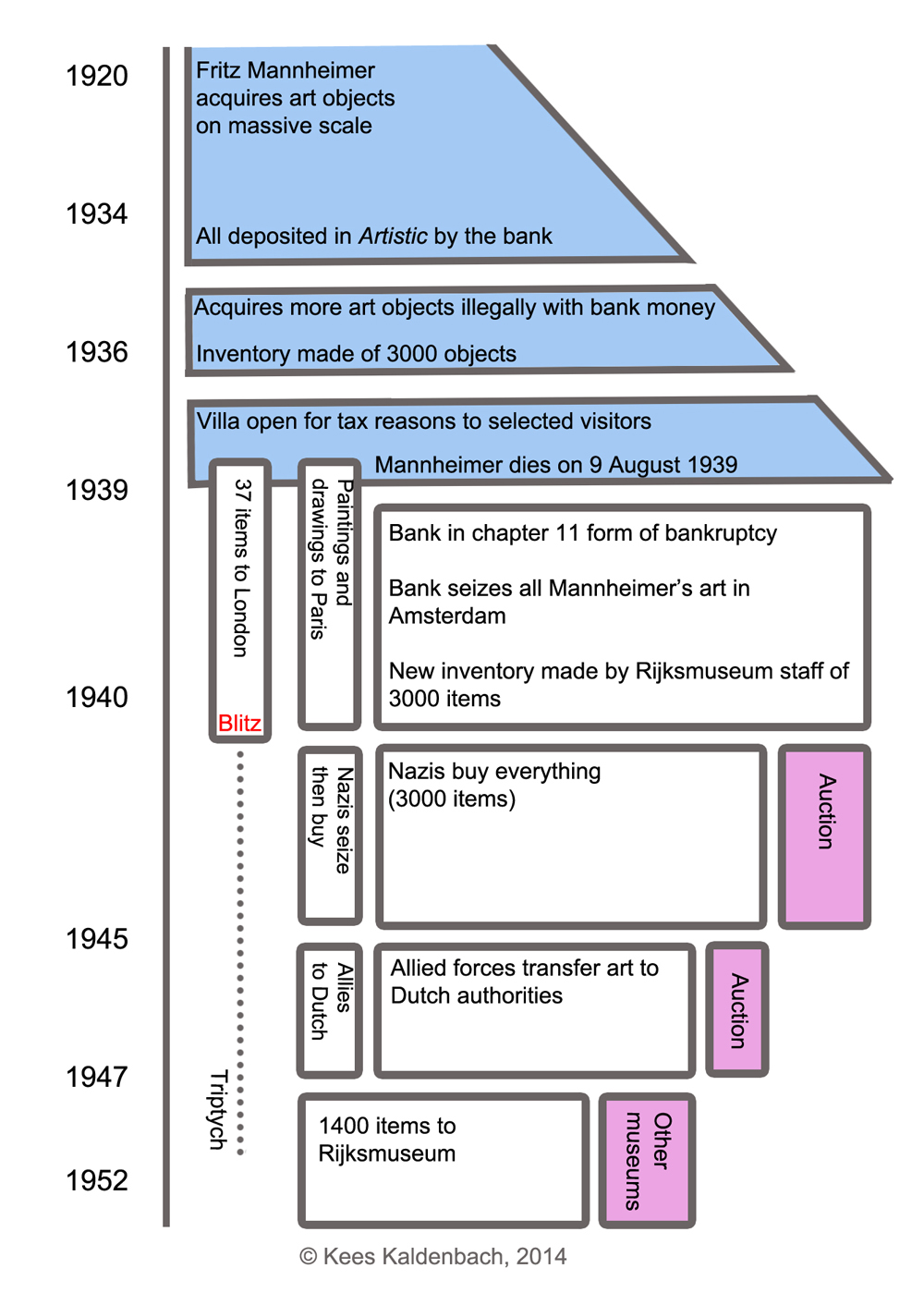 Dr Fritz Mannheimer - a 1995 thesis by Johannes Houwink ten Kate on Mannheimer, businessmen and haute finance captain in The Netherlands
Dr Fritz Mannheimer - a 1995 thesis by Johannes Houwink ten Kate on Mannheimer, businessmen and haute finance captain in The Netherlands Dr Fritz Mannheimer - a 1995 thesis by Johannes Houwink ten Kate on Mannheimer, businessmen and haute finance captain in The Netherlands
Dr Fritz Mannheimer - a 1995 thesis by Johannes Houwink ten Kate on Mannheimer, businessmen and haute finance captain in The NetherlandsSee the Online Menu of all related Mannheimer articles.
Outstanding art tours in the Rijksmuseum, Amsterdam.
Specific Mannheimer tour in the Rijksmuseum by Drs Kaldenbach.
Updated better web site at www.johannesvermeer.info
Below are excerpts from a 1995 thesis on ‘Men of Action’, Dutch Businessmen and pre-war Foreign Politics:
(excerpts all translated by Kees Kaldenbach). Author is is Professor Johannes Houwink ten Cate, ‘De Mannen van de daad’ en Duitsland, 1919-1939 Het Hollandse zakenleven en de vooroorlogse buitenlandse politiek. SDU, Den Haag 1995.
Dissertation published under auspices of NIOD.
Dr Fritz Mannheimer was the Amsterdam agent of the Reichsbank, seeking credit lines. Co-actors in 1911 were Kröller (who would later be famous for his wife’s museum, importing in grain and meat from Argentine to Holland) and Van Aalst (of the Dutch Trading Society NHM, becoming the first Dutch banker for the German Weimar Republic). Page 56.
Mannheimer was prone to overstatement, flexible with the truth and it is said after 1915 that Amsterdam had become the world centre of haute finance and there were days in which he personally traded 5 Million Pound Sterling. (p. 90)
 Mannheimer’s character: He was brilliant in establishing relationships, had enormous work energy, original initiatives. A Balzacian character, a “vie immense”, a 20th c “Jüd Suess Oppenheimer”. Monomaniac in character, intense, persuasive, an unbridled lust for life, seeking power play and succeeding in predicting which business would do well.
Mannheimer’s character: He was brilliant in establishing relationships, had enormous work energy, original initiatives. A Balzacian character, a “vie immense”, a 20th c “Jüd Suess Oppenheimer”. Monomaniac in character, intense, persuasive, an unbridled lust for life, seeking power play and succeeding in predicting which business would do well.
Father was a wine trader from Stuttgart.
Brother Viktor (suffering ill health) later got a son called Max.
PHD in law 1911, started work at the big Commerzbank. Moved to Paris to trade in currency. Moved to Kriegsmetallgesellschaft for buying strategic metals for war, moved to Holland in 1915 and met Mendelssohn & Co bankers, agent to Reichsbank. (p. 90)
He is described as a young brutal man with a crude sense of humour, treating some unwelcome guests like dogs. A compulsive buyer of consumer goods and wine he smoked the most expensive Havana cigars and dated the most beautiful women, being uninterested in their reputation. Went from home to work in his Rolls Royce cars, against all Dutch customs. When entering the office he had the full monopoly of the elevator. Had his personal office designed with luxurious Morocco leather, outshining that of all other bankers.
Clumsy and cumbersome in character, domineering everyone in his power play, he showed off his kaleidoscopic art collection. Donated 15.000 guilders to Rijksmuseum (? this info is not reflected in correspondence files in Provincial Archives, Haarlem. There it shows he donated an Italian painting). He was angling for an order of Knighthood in 1927. (p. 91)
Became the first man in money transactions for the Reichsbank. Mannheimer had a knack for currency arbitrage, juggled his ten telephones on his desk, and did miracles with his rotary calculator cylinder. In 1917 he personally pushed up the exchange rate of the Deutschmark and then threatened to become part of the Dutch Pierson bank. Stressed that his prime quality was in opening new social contacts in elevated circles. Finally in 1920 he became partner of Mendelssohn & Co, a bank that more or less functioned as a State Banker. Mannheimer received only 6 out of 20 voting shares but his debts were paid in full. Mannheimer traded in enormous piles of printed shares making his staff work overtime but their salaries and perks were incredibly high. (p.92 and 94)
Kaiser Wilhelm, in exile in Holland appointed this bank as the second caretaker of his wealth.
Mannheimer was grossly overweight (120 kilos) and suffered ill health. (p.93).
Feigning respect. he was sycophantic to Van Aalst, asking him for “audiences”. The Dutch Trading Society NHM gave Mannheimer very large short-term loans to tie him over. The Reichsbank transferred enormous amounts of treasury bills to Amsterdam underlining Mannheimer’s importance. (p.94)
To the anger of his competitors he monopolized the only Government phone hotline to Berlin for 50 minutes continuously at a time. Then in 1920 suddenly the Reichsmark collapsed. (p. 95)
In 1925 Amsterdam remained the prime trading place for German company stock, even outshining the London market. Central were three Amsterdam financial institutions: the Dutch Trading Society NHM, Pierson bank and finally Mannheimer’s own bank Mendelssohn & Co. (p 131). The latter traded in millions of guilders per year, up to 700 – 800 guilders of which only ¼ was secured and soundly established. Mannheimer built the key financial centre, but the trade went into panic and collapsed in 1931. (p. 134)
In 1937 Van Aalst’s introductions made Mannheimer socially acceptable (salonfähig) in high circles (p. 156). Mannheimer showed off his posh girlfriends when going out to theatres (p. 133) and maintained a Christian woman showering all with presents (p. 159) (not mentioned in this book is the gold-plated bathtub). In the process that led to naturalisation as a Dutchman, opposing fascist voices were loudly heard in the press and in the house of representatives. (p.160)
Mannheimer repaid his successful naturalisation by keeping up the standard of the Dutch guilder high and by secretly plundering his own bank Mendelssohn & Co. (p.157). Mannheimer managed the haute finance of Belgium and France. (and some middle and eastern European nations).
Dutch prime minister Colijn became a close friend. Mannheimer bought a villa in Vaucresson and ordered it filled with design and art. In other purchased villas around him he collected a circle of friends and family including his mother, sister in law, his nephew Max and his cousin Ellen. Mannheimer became scared when alone.
His private physician Dr Kélen have him shots of morphine and opium to manage his heart condition. He started losing weight from his standard overweight 120 kg to 100, 80 and finally went down to 45 kilos. He falsified annual financial reports, shielding the true bankrupt state of his bank. (p. 193-194)
As personal nurse, he welcomed the Jane Reiss (Brazilian Jewish) as head of household and nursing. Although actually bankrupt, she understood him to be a rich man (the Financial Times estimated him at 10 Million Pound Sterling) and they got married. He gave jewels and a villa in Cannes; she got pregnant. Mannheimer still juggled with emissions of stock and a make-believe game in haute finance and filled holes in old debts by creating new emissions and debts. His friend Reynaud, minister of finance, still believed in him and gave him a high French Order, Legion d’Honneur, just hours before marriage. (p.194-195)
He started moving parts of his art collections to Paris and London, under the name of this new wife. On 9 August he went to his favourite Hotel Meurice at place Vendome, and travelled on to Villa Monte Christo in Vaucresson. There, while walking in the garden he had a heart attack. A shot given by a second physician, Dr Walser, did not help. This doctor denied the rumours of suicide. Mannheimer died in his bed, at 10 PM with his family around him, just 49 years old (p 199) He left massive debts worldwide.
Reynaud was not at the funeral to which only 5 family members were allowed in by the Lord Mayor, but signed the condolence register.
=====================================================
Published 17 January, 2016. Updated 31 October, 2016.
Further reading and notes: http://kalden.home.xs4all.nl/mann/Mannheimer-menu.html
======================================================


=========
New information, 2016, provided by Radboud van Beekum: in 1924 Hanna Elkan (1893 Berlin - 1967 Santiago) came, probably through contacts with artist Else Berg, to the Netherlands. At that time she photographed among others dancer Gertrud Leistikow. When she settled permanently in Amsterdam in 1928, the Van Baerlestraat 80, she was soon named as a portrait photographer, for people in the music (Bruno Walter, Igor Stravinsky) literature (Simon Vestdijk, Victor Vriesland) and theater world (Paul Huf sr., Erika Mann). She moved in circles Leistikow, Mountain, Architectura et Amicitia, Paul Huf sr., Ed. In 1930 banker and art collector Fritz Mannheimer commissioned her to capture the interior of his house on the Hobbemastraat 20. The 51 recordings were compiled in an album that is now in the Rijksmuseum.
New information, 2016, provided by Radboud van Beekum: Hanna Elkan (1893 Berlin - 1967 Santiago de Chile) kwam, waarschijnlijk via contacten met kunstenares Else Berg, in 1924 naar Nederland. In die tijd fotografeerde zij o.a. danseres Gertrud Leistikow. Toen zij zich in 1928 definitief in Amsterdam vestigde, aan de Van Baerlestraat 80, kreeg zij al gauw naam als portretfotograaf, voor mensen uit de muziek- (Bruno Walter, Igor Stravinsky) literatuur- (Simon Vestdijk, Victor van Vriesland) en toneelwereld (Paul Huf sr., Erika Mann). Zij verkeerde in kringen rond Leistikow, Berg, Architectura et Amicitia, Paul Huf sr., ed. In 1930 kreeg zij van bankier en kunstverzamelaar Fritz Mannheimer de opdracht het interieur van zijn huis aan de Hobbemastraat 20 vast te leggen. De 51 opnamen werden gebundeld in een album dat zich thans in het Rijksmuseum bevindt.
Radboud van Beekum
Historisch onderzoek
======
About Art Historian Drs. Kees Kaldenbach: Read a biography.
Reaction, questions? Read client testimonials.
Drs. Kees Kaldenbach, art historian, kalden@xs4all.nl Haarlemmermeerstraat 83hs, 1058 JS Amsterdam (near Surinameplein, ring road exit s106, streetcar tram 1 and 17).
Telephone 020 669 8119; cell phone 06 - 2868 9775.
Open seven days a week. Menu of tours
Amsterdam Chamber of Commerce (Kamer van Koophandel) number of Johannesvermeer.info / Lichaam & Ziel [ Body & Soul] is 3419 6612.
E mail esponses and bookings to art historian Drs. Kees Kaldenbach.
This page forms part of the 2000+ item Vermeer web site at www.xs4all.nl/~kalden
Launched November 12, 2014. Update 7 March, 2018.
Adriaen Coorte, by Quentin Buvelot, book & exhibition catalogue.
De Grote Rembrandt, door Gary Schwartz, boek.
Geschiedenis van Alkmaar, boek.
Carel Fabritius, Tentoonstellingscatalogus.
Frans van Mieris, Tentoonstellingscatalogus.
From Rembrandt to Vermeer, Grove Art catalogue, book.
Vermeer Studies, Congresbundel.
C. Willemijn Fock: Het Nederlandse interieur in beeld, boek.
Het Huwelijksgeschenk (1934), boek over de egoïstische vrouw, die haar luiheid botviert.
Zandvliet, 250 De Rijksten van de Gouden Eeuw , boek + nieuwe stippenplattegrond!
Ik doe wat ik doe, teksten van Lennaert Nijgh , boek + cd
Het Rotterdam Boek, boek.
Bouwen in Nederland 600 - 2000, boek.
Hollandse Stadsgezichten/ Dutch Cityscape, exhib. cat.
Zee van Land / over Hollandse Polders (NL) boek
Sea of Land / about Dutch Polders (English) book
A full article on the large portrait of the marvellous preacher Uytenboogaard.
Artikel over Uytenboogaerd, Nederlandse versie.
Geert Grote en het religieuze Andachtsbild
TEFAF 2008 art fair